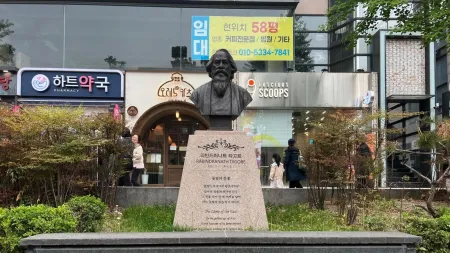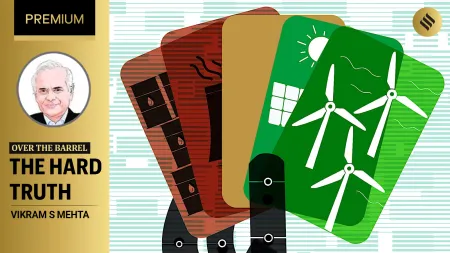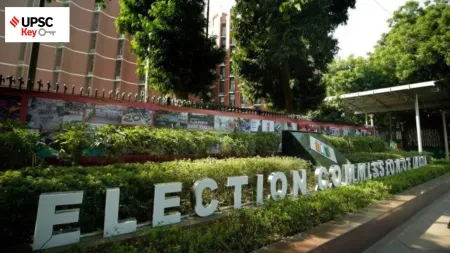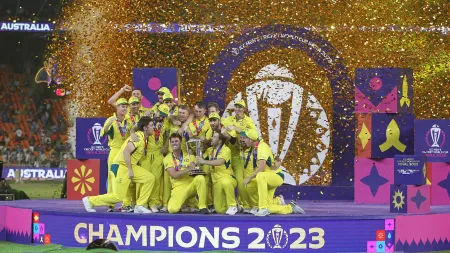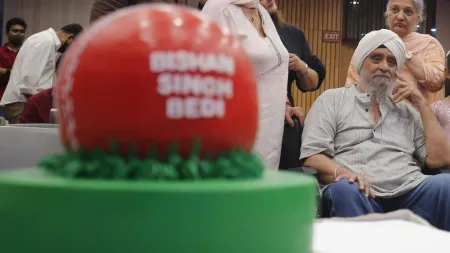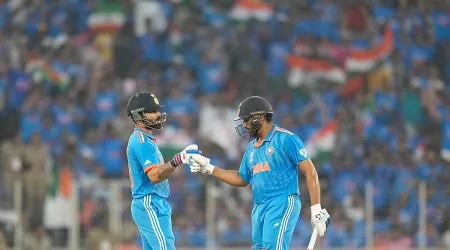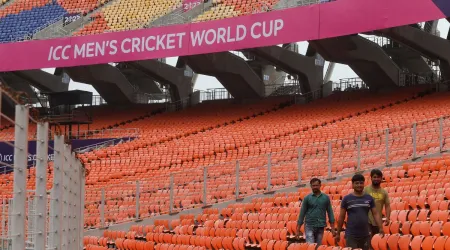- India
- International
Headache for the BCCI: How climate change is shrinking cricket season
Climate change has proved to be a headache for the BCCI officials as they try to schedule games — both domestic and international — in a window that is increasingly shrinking.
 Cricketers with masks is a common sight during early winter in Delhi. (File)
Cricketers with masks is a common sight during early winter in Delhi. (File)
Pollution in New Delhi, drought in Maharashtra and unseasonal rains across the country. Cricket, a day-long outdoor sport, is increasingly finds itself at the mercy of the elements. Climate change has proved to be a headache for the BCCI officials as they try to schedule games — both domestic and international — in a window that is increasingly shrinking.
The latest casualty was the T20 game between India and Sri Lanka, which was abandoned without a ball being bowled because of rains in Guwahati in the first week of January. Between January 2 and January 8, the rainfall in Assam was 172 per cent more than normal. Plus there was a cyclone threat to a T20 International between India and Bangladesh in Rajkot in November. Domestic games too bore the brunt of the vagaries of changing weather patterns.
Heavy rainfall in September-October affected the Vijay Hazare Trophy — domestic ODI tournament — with wash-outs in Dehradun in Uttrakhand, Baroda in Gujarat, Alur in Karnataka, Jaipur in Rajasthan and Bangalore. Two quarterfinals and the final were truncated affairs and teams called for reserve days to be introduced henceforth. Lack of rains is also a problem for cricket. Over the years, IPL matches have been moved out of states because of a drought in the summer.
Besides, pollution, not for the first time, has forced cricketers to wear masks in New Delhi in November, a poor advertisement for the air quality in the capital.
Also Read | Sore throat to breathlessness: How air pollution has plagued sports in New Delhi

Bala Govindasamy, a global climate change researcher, says last year’s monsoon cycle was erratic. “Whatever we saw last year, the unusual rain during the end of September and into October, we may not see that in the next few years because it was a chaotic pattern. I wouldn’t rule out the possibility of climate change affecting the monsoon but we can’t conclusively say so because there is no consensus. That said, it is true that the window is really narrowing for sports like cricket. In May-June it is terribly hot in North India. The number of warmer days are increasing and that is because of climate change. In June, July, August and September it is going to rain. October is good but last year it rained in October. Of course November, December and January is not a good period in North India because of smog and pollution. So the window of opportunity is shrinking for a sport like cricket,” Govindasamy, a professor at the Centre for Atmospheric and Oceanic Sciences at the Indian Institute of Science, Bangalore, said.
No permanent solution
There is no permanent solution to the pollution catastrophe yet and if the phenomenon witnessed last year reoccurs in the near future — of the southwest withdrawing slowly and late and on the same day as the onset of the northeast monsoon — it could lead to an increasing number of truncated matches.
The impact was felt during the Vijay Hazare Trophy which ran from September 24 to October 25.
Eighteen matches in the first three days of the tournament were hit by rain or a wet outfield and half a dozen matches had to be abandoned without a ball being bowled. The Board of Control for Cricket in India (BCCI) had reworked the schedule for the 2019-2020 domestic season by moving the one-day tournament to the start. Yet the BCCI will likely have less elbow room when the next season’s fixtures are finalised.
Saba Karim, the BCCI’s general manager (cricket operations) said the one-day tournament and the T20 tournament, the Syed Mushtaq, were moved up for a reason. “We have the Vijay Hazare and the Mushtaq Ali at the beginning of this season, so that even if they are affected by rains at least the Ranji Trophy is not. There is nothing much we can do about the weather because it is beyond our control,” Karim said.
He added that it was challenging to ensure matches which are abandoned because of the weather are rescheduled. “The monsoon arrived late this season and it stretched till October. So we remained very flexible and fluid. The idea is to provide as many matches as possible to our domestic cricketers. So wherever there’s a possibility of rescheduling due to weather, we try and accommodate that, by being fair to everybody. Smog is an issue in northern India, especially Delhi, post-Diwali. We try to keep that in mind, but it’s not so easy. But you know, eventually, by the end of domestic calendar, things balanced out,” the BCCI GM said.
Also Read | Dalila Jakupovic retires from Australian Open qualifying after coughing fit
The Indian Meteorological Department has recorded more than 560 extreme rainfall events this year. This is much more than what has been observed recently. Last year had just 321 extreme rainfall events, and the years prior to that much less.
A total to 2,600 very heavy rainfall events were also recorded till the first week of October, a much higher number than in the past. Another aspect of this year’s monsoon was the unusually high rainfall in September. This year the figure was 259.3 mm rain though it was predicted to be about 170 mm.
When the rain abates, pollution plays havoc in the north, especially New Delhi.
The air quality was in the ‘hazardous’ category when India hosted Bangladesh in a T20 International on November 3. In 2017, Lankan players wore masks and their fast bowlers struggled to breathe during a Test match at the Feroz Shah Kotla. A couple of them also threw up during the course of the game.
Last season, at least three Mumbai Ranji Trophy players wore masks during a game against Railways at the Karnail Singh Stadium. The previous season too, in November 2017, smog in the capital affected cricket and prevented two Ranji Trophy matches from starting as per schedule as visibility was an issue at both Feroz Shah Kotla, where Bengal were to face Gujarat, and at Karnail Singh Stadium, where Tripura faced Hyderabad.
Players wearing masks because of pollution is now an annual sight in the capital.
Get latest updates on IPL 2024 from IPL Points Table to Teams, Schedule, Most Runs and Most Wickets along with live score updates for all matches. Also get Sports news and more cricket updates.




